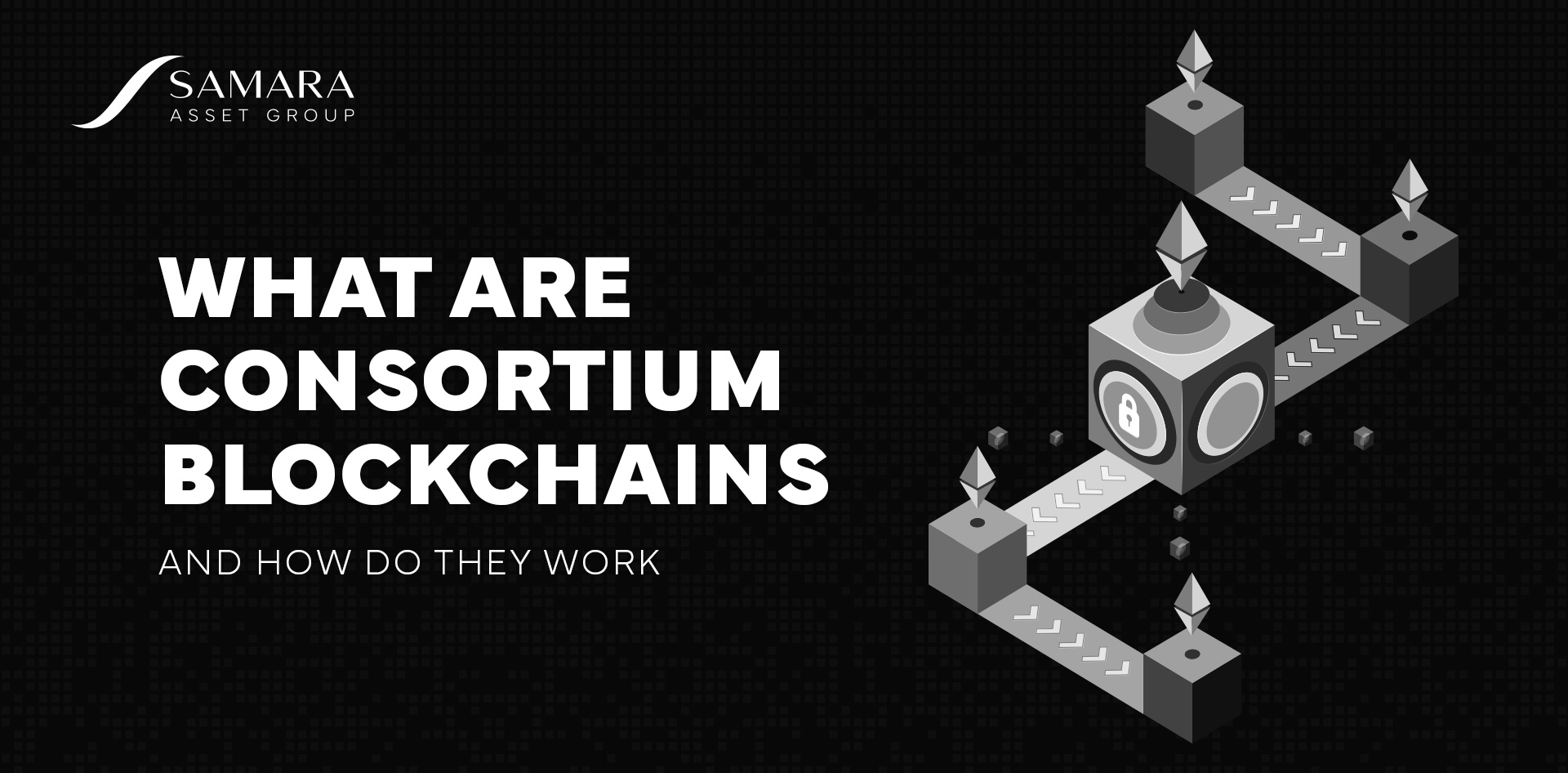Bitcoin
Bitcoin CPI
Venture Portfolio
Funds
Market Insights
Indicators
About
Contact

May 20, 2024





Bitcoin's emergence led to interest in blockchain technology for organizations to operate decentralized networks, thanks to the security, trust, and reliability that comes with the technology. Consortium blockchains arose from the need to achieve consensus, privacy, and efficiency among multiple organizations using one decentralized network by limiting validation to a small group of nodes.
Read on to learn what consortium blockchains are, how they work, and to discover examples of leading consortium chains.
Consortium blockchains are permissioned blockchains with access provided to a small group of nodes. Each node operator has equal power, ensuring the decision-making process is not centralized.
The enterprise use of consortium blockchains means pseudonymity is not an option, as identification of all parties is a feature of these networks.
Several organizations agree to form the consortium blockchain, each providing a peer for block commitment and transaction endorsement.
The client applications propose transactions, and the peers validate them. They then leave them to the orderers, who package them into blocks.
Five features characterize the workings of a consortium blockchain:
Now, let’s take a look at some of the leading consortium chains on the market.
Hyperledger is the brainchild of the Linux Foundation and has been operational since December 2015. The platform enables groups to create their consortium blockchains.
One of its products is Hyperledger Fabric, a modular blockchain infrastructure with Ethereum Virtual Machine (EVM) support and smart contract functionality. Using Hyperledger Fabric, IBM and Walmart built the IBM Food Trust, which uses blockchain technology to track food.
Hyperledger has provided multiple companies with tools to create their consortium blockchains. These companies include Aetna, Oracle, Huawei, BNY Mellon, Visa, FedEx, and Amazon.
The Enterprise Ethereum Alliance (EEA) comprises corporations from various sectors who share an interest in driving the use of Enterprise Ethereum and Mainnet Ethereum blockchain technology to empower all participants.
The EEA focuses on offering private and consortium blockchain solutions to organizations. Its partnership with Intel and Microsoft led to the creation of a token that incentivized companies to take part in EEA-based consortiums.
In addition to the two aforementioned corporations, EEA founding members include Wipro, Tendermint, UBS, ING, Credit Suisse, BP, Banco Santander, BBVA, J.P. Morgan, and ConsenSys.
The objectives behind the formation of the R3 consortium were to increase settlement speeds, reduce transactional errors, and decrease the cost of transactions. The consortium comprises financial institutions working on Corda, a blockchain-based project aimed at achieving the goals.
Using the Corda consortium blockchain, multiple companies can share data while concealing its content from other participants. Consensus and transaction validation only require the participation of the parties involved. Regulatory and observer nodes only participate in ensuring the blockchain's integrity. The network ensures the smart contract terms are enforceable by recording a link with real-world legal documents.
Companies using the Corda consortium blockchain infrastructure include China Merchants Bank, HSBC, MetLife, BNP Paribas, and Morgan Stanley.
Based on the Ethereum blockchain, the Aura Blockchain Consortium helps fashion companies and their customers authenticate products to combat counterfeiting. The consortium blockchain also promotes ethical consumerism by providing detailed supply chain information on details such as the sourcing of raw materials.
Aura Blockchain Consortium uses consortium blockchain technology to grant equal rights to any participating organization. It also offers a SaaS product that allows immutable storage of product history, ownership, and transfer information.
The founding companies include Cartier, Prada Group, and LVMH. Later, the project expanded from fashion to luxury brands, including OTB Group, Mercedes-Benz, Bvlgari, Hennesy, and Hublot.
IBM Food Trust links food manufacturers, distributors, processors, retailers, growers, and other relevant stakeholders to optimize collaboration, efficiency, and safety. Built using Hyperledger Fabric, IBM Food Trust comprises multiple consortium blockchains where a company connects with its stakeholders. Depending on their needs, participants can opt for private or consortium blockchains.
One of the best-known participants is Walmart, which can use IBM Food Trust to instantly trace products to their source. This helps the retail giant identify food contamination issues at the source.
IBM Food Trust participants in addition to Walmart include Golden State Foods, Driscoll's, Kroger, Unilever, McCormick, Dole, Nestle, Tyson Foods, Raw Seafoods, CHO, and Carrefour.
Consortium blockchains combine the features of public and private blockchains to offer participants unique benefits, such as:
Consortium blockchains present various drawbacks as well:
Consortium blockchains utilize distributed ledger technology to serve enterprises across various industries.
Companies can pool resources to solve common challenges and share data to reduce operational costs and improve efficiency. However, the relatively new concept still presents challenges, such as collusion leading to centralization risks and bootstrapping costs.
Future development that addresses such concerns will be key in determining its viability for mainstream adoption.